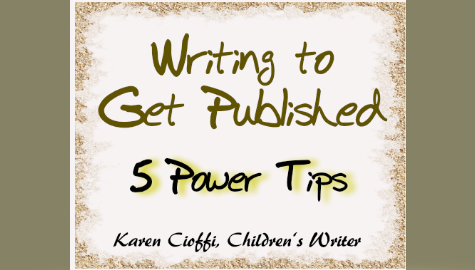All writers have one primary focus—to get published. What makes each of us different is our slant or perspective on the story we’re telling, and how we tell it.
It’s true that anyone can write, but writing to get published is another story. To accomplish this, there are four steps you need to include in your writing. (The fifth tip is a bonus.)
THE FIVE TIPS
1. Write an out-of-the-ballpark beginning
This is the crucial step that will determine whether the agent or editor keeps reading. Your beginning needs to grab the reader; it needs to lead the reader on without his having to think about it.
Here are different slants on a possible beginning:
A. Jan saw blood dripping down the wall. She screamed.
This idea is a beginning that might entice a reader to keep reading, but the problem is that it’s telling not showing. To add showing:
B. Blood dripped down the stark white wall, adding to the puddle already formed on the floor. Jane felt a quiver run down her spine. Reacting before thinking of the consequences, a blood-curdling scream issued from the depths of her being.
C. Blood slowly dripped down the stark white wall. A quiver ran throughout Jane’s body. An urgent eruption welled up from the depths of her being and brought forth a blood-curdling scream.
D. Blood slowly dripped down the stark white wall, adding to the dark red puddle already formed on the floor. A quiver ran throughout Jane’s body, creating an urgent eruption that welled up from the depths of her being—a blood-curdling scream issued forth.
Examples B, C, and D do a much better job of showing rather than telling. While they can easily be taken apart and reworded for tightness, more or less description, whatever the author deems necessary, for this article, they serve their purpose.
And remember, using descriptive words and adverbs adds to the word count. So, analyze each word you use; be sure it enhances the story and moves it along; you don’t want the word to weigh the story down. In today’s writing world, publishers and agents want tight writing.
2. The body of your story
This area needs to fulfill the beginning’s promise. It needs to keep the reader interested in the characters and plot—this will ensure the reader keeps turning the pages. You also need to keep track of everything going on in the story and follow through. Readers don’t want to feel cheated or disappointed.
Some authors use character and event cards or sheets to keep track of each character’s qualities and the details of each event. This will guarantee continuity and help prevent loose ends.
3. Your ending
The ending must tie everything together and tie up all loose ends. If you wrote a paragraph or chapter about John and Jane contemplating marriage, then segue into something else, let the reader know how it ends up.
It’s also a plus if you can come up with a twist at the end, something the reader won’t expect.
But keep in mind, you must leave the reader satisfied.
4. Submitting your work
You’ll never know if you’ve written the next best seller if you don’t submit your work. Research publishers and/or agents who work in the genre you write. Choose the ones that you think are the best fit and study their guidelines. Then, follow the guidelines and submit your work. Don’t let fear or uncertainty keep you from moving forward—nothing ventured, nothing gained.
5. Attend conferences.
If you’re able to, attend writing/pitching conferences, like the one Writer’s Digest has. I know an author who got nibbles from 10 out of 14 agents and publishers. Big enough nibbles that they requested 25-50 pages of her story. And, one asked for the entire manuscript.
This is the power of pitching at a conference.
Along with this, it’s important to network as much as you can – conferences are a great place to do this.
MORE ON WRITING FOR CHILDREN
Writing with Clarity
Writing Rhyme in Children’s Stories
The Writing Elements Mix – Is There a Right Balance?
NEED HELP WITH YOUR STORY?
I’m a working children’s ghostwriter, rewriter, and coach. I can help turn your story into a book you’ll be proud to be the author of, one that’s publishable and marketable.
OTHER HELP I OFFER:
HOW TO WRITE A CHILDREN'S FICTION BOOK
A DIY book to help you write your own children’s book.
FICTION WRITING FOR CHILDREN eCOURSE
4-Weeks / 8 Sections Guided Self-Study Program
You can contact me at kcioffiventrice@gmail.com.


3 thoughts on “Writing to Get Published – 5 Power Tips”